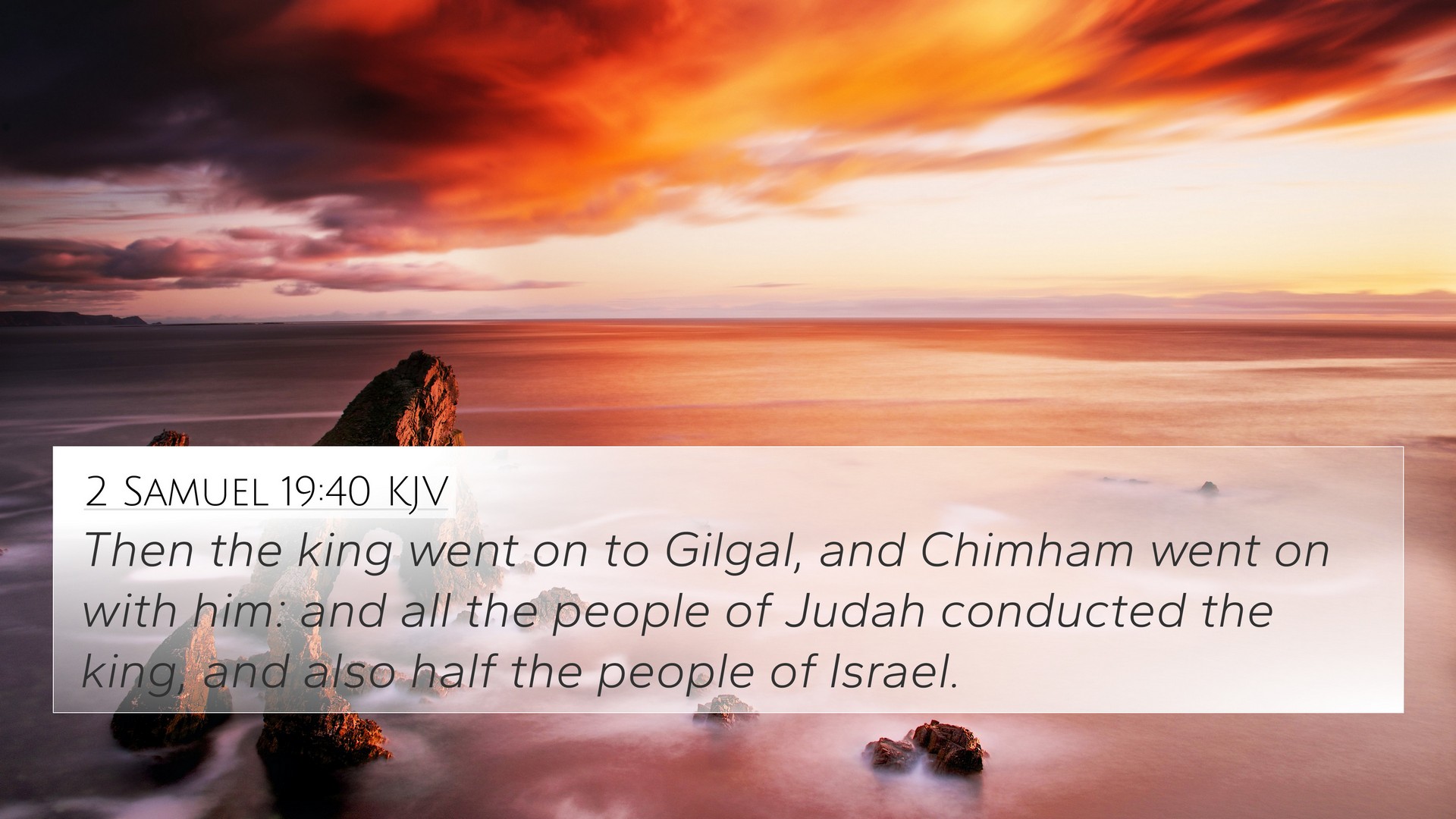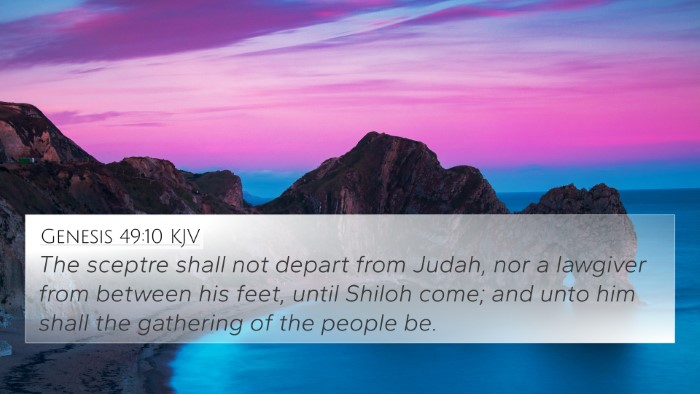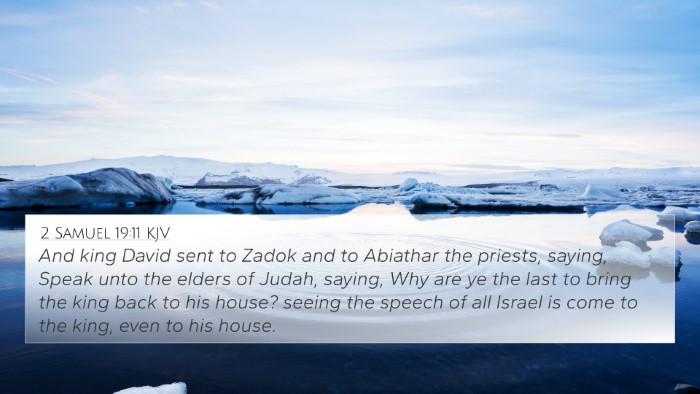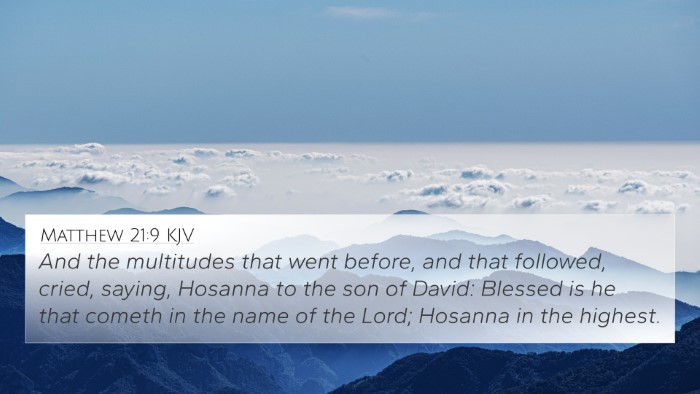Understanding 2 Samuel 19:40
Verse Context: In 2 Samuel 19:40, we observe a pivotal moment as David returns to Jerusalem after the rebellion of Absalom. This return signifies restoration, reconciliation, and a renewed focus on David's kingship.
Verse Analysis
This verse presents a narrative of movement—both physically and symbolically—as David is brought back to his rightful place as king. It reflects themes of loyalty, forgiveness, and the often tumultuous nature of leadership. The journey back from the Jordan is laden with implications regarding the relationships between kings and their subjects and how reconciliation can follow conflict.
Insights from Commentaries
- Matthew Henry: Henry emphasizes the idea of unity and the people’s reaction to David’s return. He highlights how David’s acceptance back into Jerusalem is a reflection of God’s grace and the loyalty of his followers.
- Albert Barnes: Barnes points out that this moment is not just a physical transition but signifies a deeper spiritual restoration. He notes that the journey from the Jordan implicates themes of faith and the contrast between the loyalty of David’s men and the treachery of Absalom.
- Adam Clarke: Clarke discusses the importance of the geographical movement from the Jordan and how it underscores the themes of territorial return and restoration of divine order. He also highlights the emotional elements of this return for David and his people.
Thematic Connections
In exploring the connections between Bible verses, we can uncover rich layers of meaning. Here are several pertinent cross-references that relate thematically and contextually to 2 Samuel 19:40:
- 1 Samuel 16:1-13: God's choice of David as king highlights themes of divine selection and leadership.
- 2 Samuel 15:14-16: David's initial departure from Jerusalem, which sets the stage for his return.
- 2 Samuel 18:33: David's grief over Absalom, which shows the burden of leadership mixed with personal loss.
- Psalms 51: David's cry for mercy after sin, demonstrating the need for repentance and restoration.
- Matthew 5:9: The blessedness of peacemakers ties into the reconciliation present in David’s return.
- Luke 15:20: The parable of the Prodigal Son illustrates the themes of forgiveness and welcome back into the fold.
- Romans 8:28: God's sovereignty in weaving together circumstances for good, paralleling David's situation of returning against the odds.
Applications
In a contemporary setting, 2 Samuel 19:40 encourages believers to reflect on the importance of reconciliation and the process of returning to one’s rightful place after conflict. It encourages a deep examination of leadership qualities and the grace shown in forgiveness.
Tools for Further Study
To explore these themes and connections more deeply, consider utilizing various Bible reference resources, such as:
- Comprehensive Bible cross-reference materials to uncover motifs across the scripture.
- Bible concordance to find specific verses related to themes of leadership and reconciliation.
- Cross-reference Bible study guides for thematic studies.
- Tools for cross-referencing Bible texts that help identify interconnections.
Conclusion
As you study 2 Samuel 19:40, keep in mind the significance of the connections between Bible verses. The narrative of David’s return not only marks a historical moment but serves as a profound teaching point on forgiveness, loyalty, and the complex nature of life's journeys. Through the art of cross-referencing Biblical texts, one may better grasp the unfolding story of redemption woven throughout scripture.





